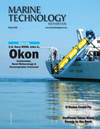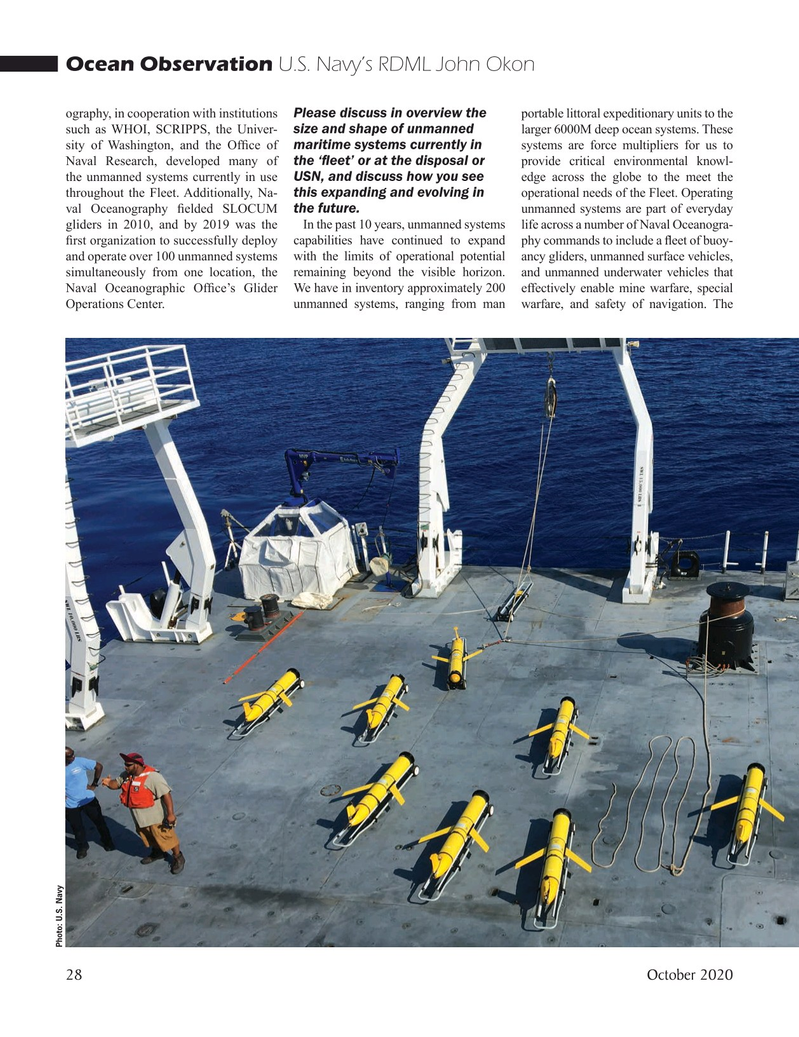
Page 28: of Marine Technology Magazine (October 2020)
Read this page in Pdf, Flash or Html5 edition of October 2020 Marine Technology Magazine
Ocean Observation U.S. Navy’s RDML John Okon
Please discuss in overview the ography, in cooperation with institutions portable littoral expeditionary units to the size and shape of unmanned such as WHOI, SCRIPPS, the Univer- larger 6000M deep ocean systems. These maritime systems currently in sity of Washington, and the Of? ce of systems are force multipliers for us to the ‘? eet’ or at the disposal or
Naval Research, developed many of provide critical environmental knowl-
USN, and discuss how you see the unmanned systems currently in use edge across the globe to the meet the this expanding and evolving in throughout the Fleet. Additionally, Na- operational needs of the Fleet. Operating the future. val Oceanography ? elded SLOCUM unmanned systems are part of everyday gliders in 2010, and by 2019 was the In the past 10 years, unmanned systems life across a number of Naval Oceanogra- ? rst organization to successfully deploy capabilities have continued to expand phy commands to include a ? eet of buoy- and operate over 100 unmanned systems with the limits of operational potential ancy gliders, unmanned surface vehicles, simultaneously from one location, the remaining beyond the visible horizon. and unmanned underwater vehicles that
Naval Oceanographic Of? ce’s Glider We have in inventory approximately 200 effectively enable mine warfare, special
Operations Center. unmanned systems, ranging from man warfare, and safety of navigation. The
Photo: U.S. Navy 28 October 2020
MTR #8 (18-33).indd 28 10/8/2020 9:17:24 AM

 27
27

 29
29
